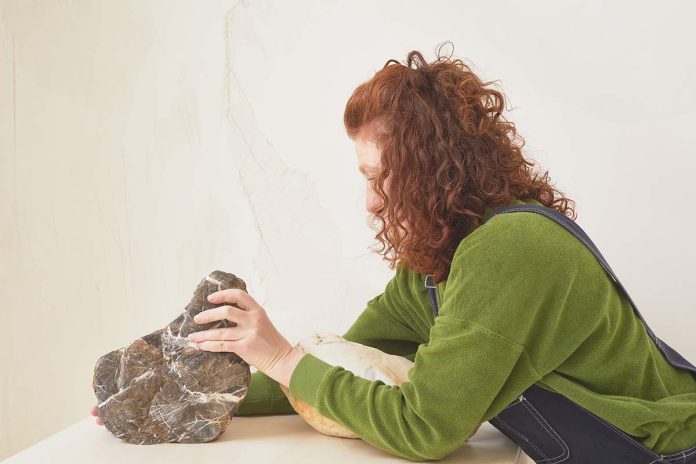When we get in touch, during a hot day in July, she must have just returned from a morning at the glassworks: it is clear – especially with the current temperatures – that work begins early in the workshop for the blowing of the famous artistic glass of Murano. This is where Lætitia Jacquetton completes her creations, working in close contact with the teams of craftsmen who for decades have protected and passed down the secrets of glassblowing. Lætitia Jacquetton was born in Dijon in 1970, and began her professional path as a fashion designer. Then, five years ago, came the passion for glass and a special combination of materials: blown glass and natural stone.
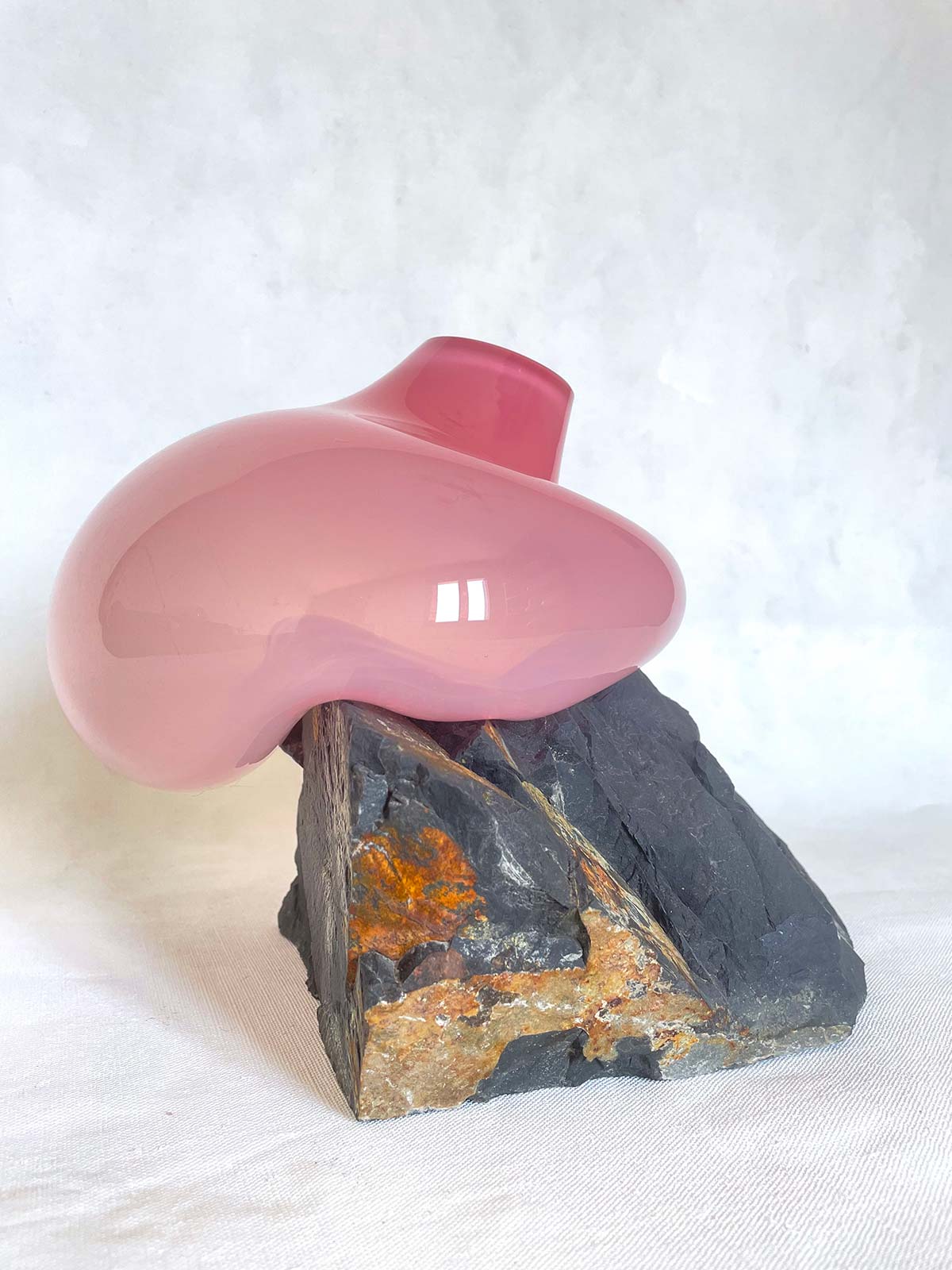
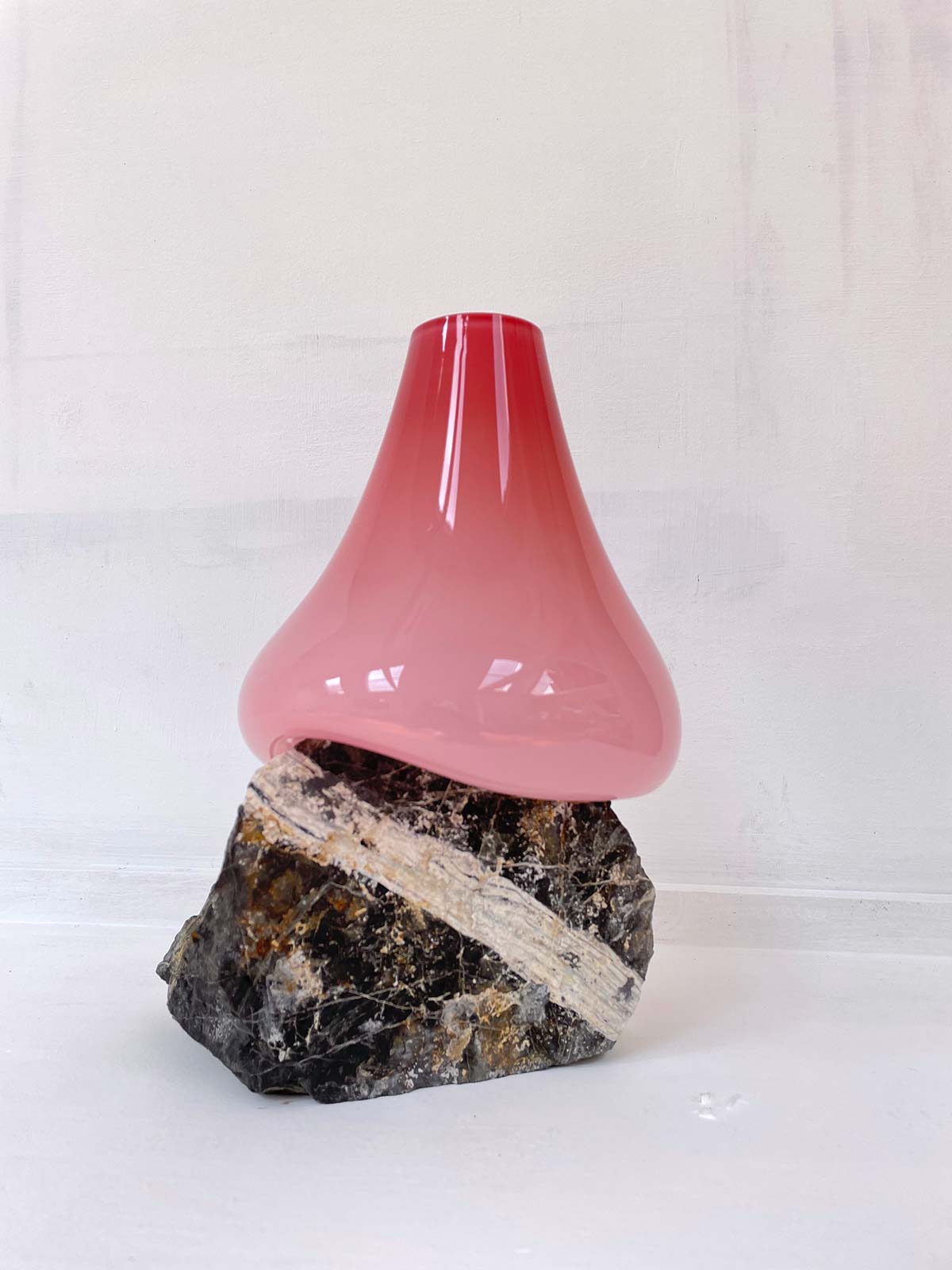
This passion, which had already led her to walk in the mountains of southern France, searching for the best stones for her sculptures, prompted her to take a course in Murano and then to continue her studies at CERFAV (European Center for Research and Training in Glass Arts), in Vannes-le-Châtel, a town in eastern France in a historic zone for glassmaking – near the Daum manufacture, in a region of flourishing companies like Gallé and Lalique, as well as the Meisenthal glassworks and the crystal maker Saint-Louis. This attraction to glass made her move from Paris to Murano, in the middle of the lockdown in 2021.
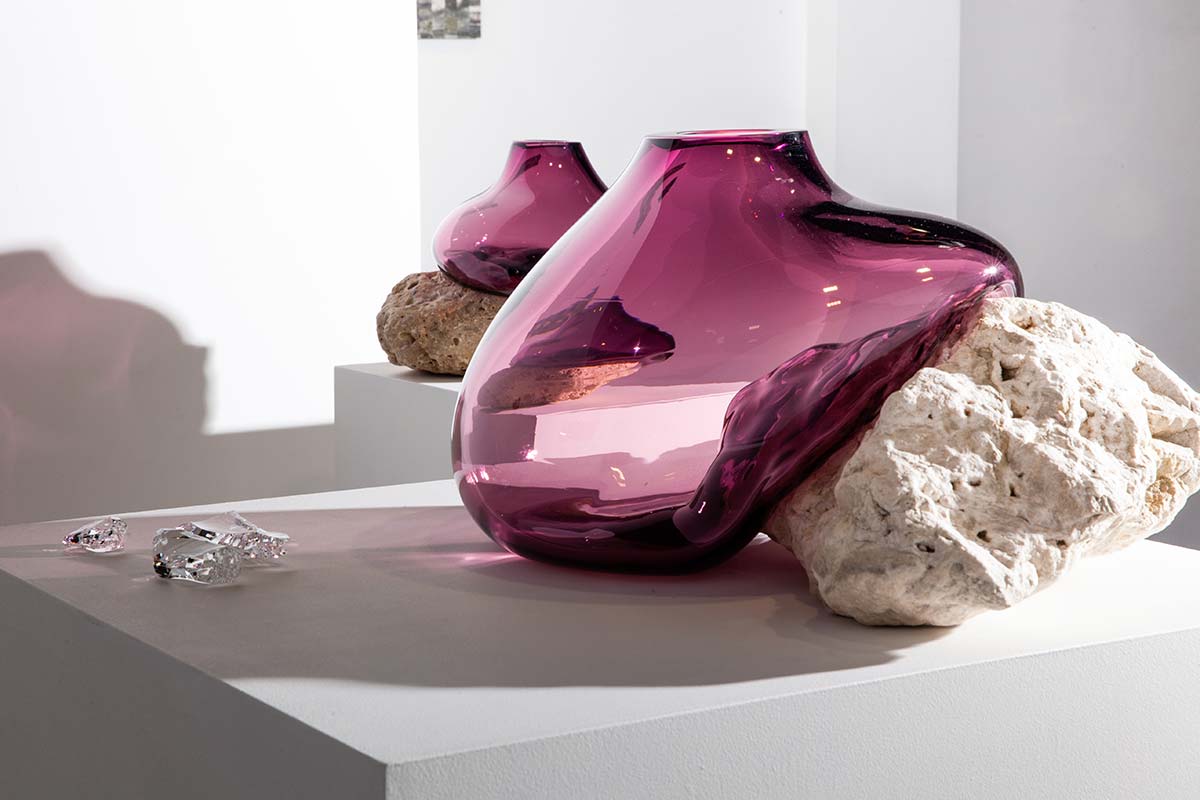
“In addition to my love for Italy and Italians, I decided to live in Murano because it would be easier for me to develop my works in proximity to the place where they are made. Among the many glassblowing workshops I have visited, those of Murano are the best in terms of the final results.” It must not have been simple for her to depart from the art scene in the French capital and to move to an archipelago of the Venetian lagoon with just 5000 inhabitants. “I miss the artist community and my friends from Paris,” she confesses. “Sometimes I escape to the mainland or to Venice, but the positive side of living in Murano is the fact that I can stay very concentrated on my work. I love to feel part of the makers community here, I know that whatever difficulty I face in my practice, they will find a way to help. And I thank them for all they brought to me and to my practice, which developed more here than in France.”
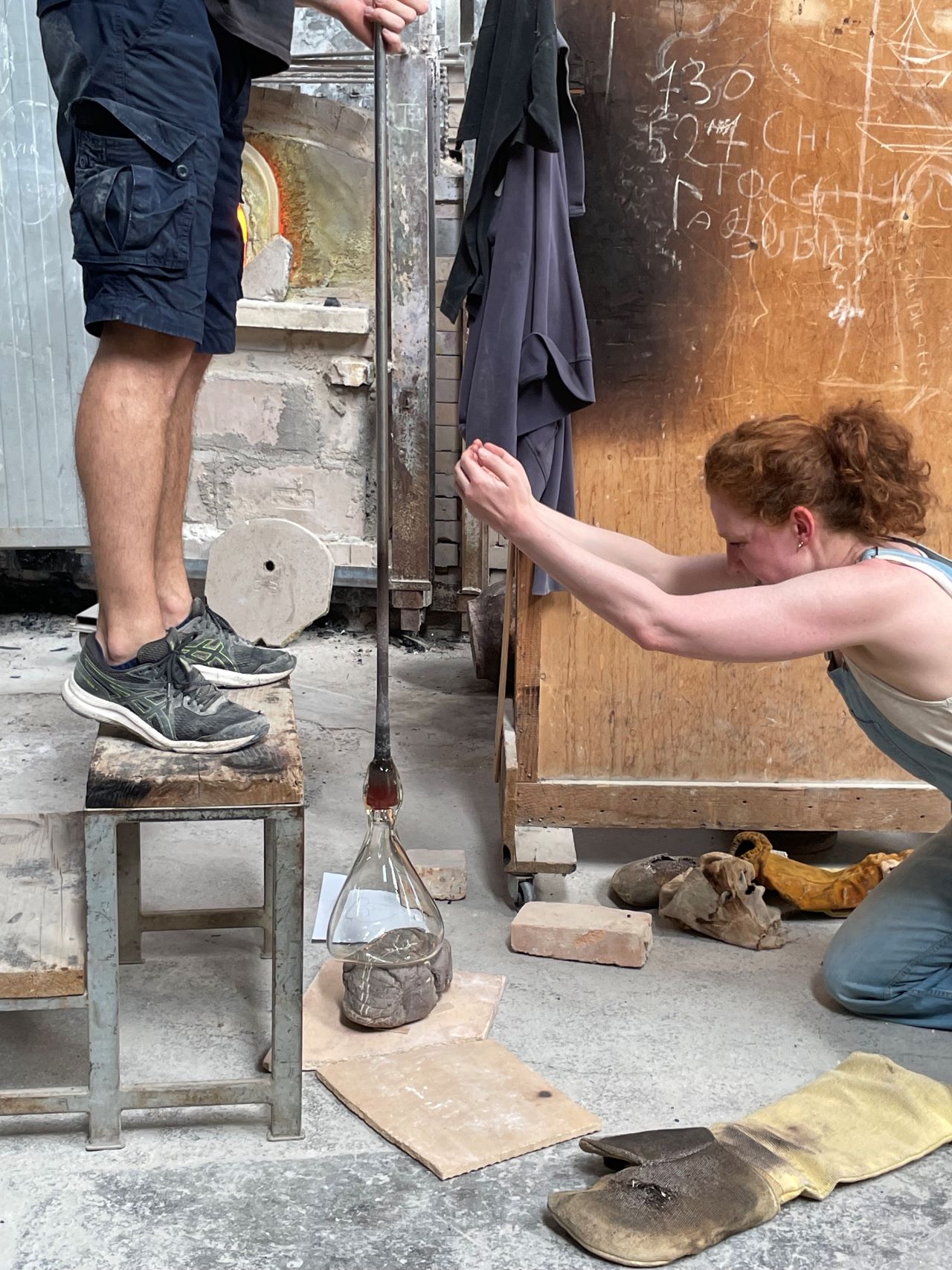
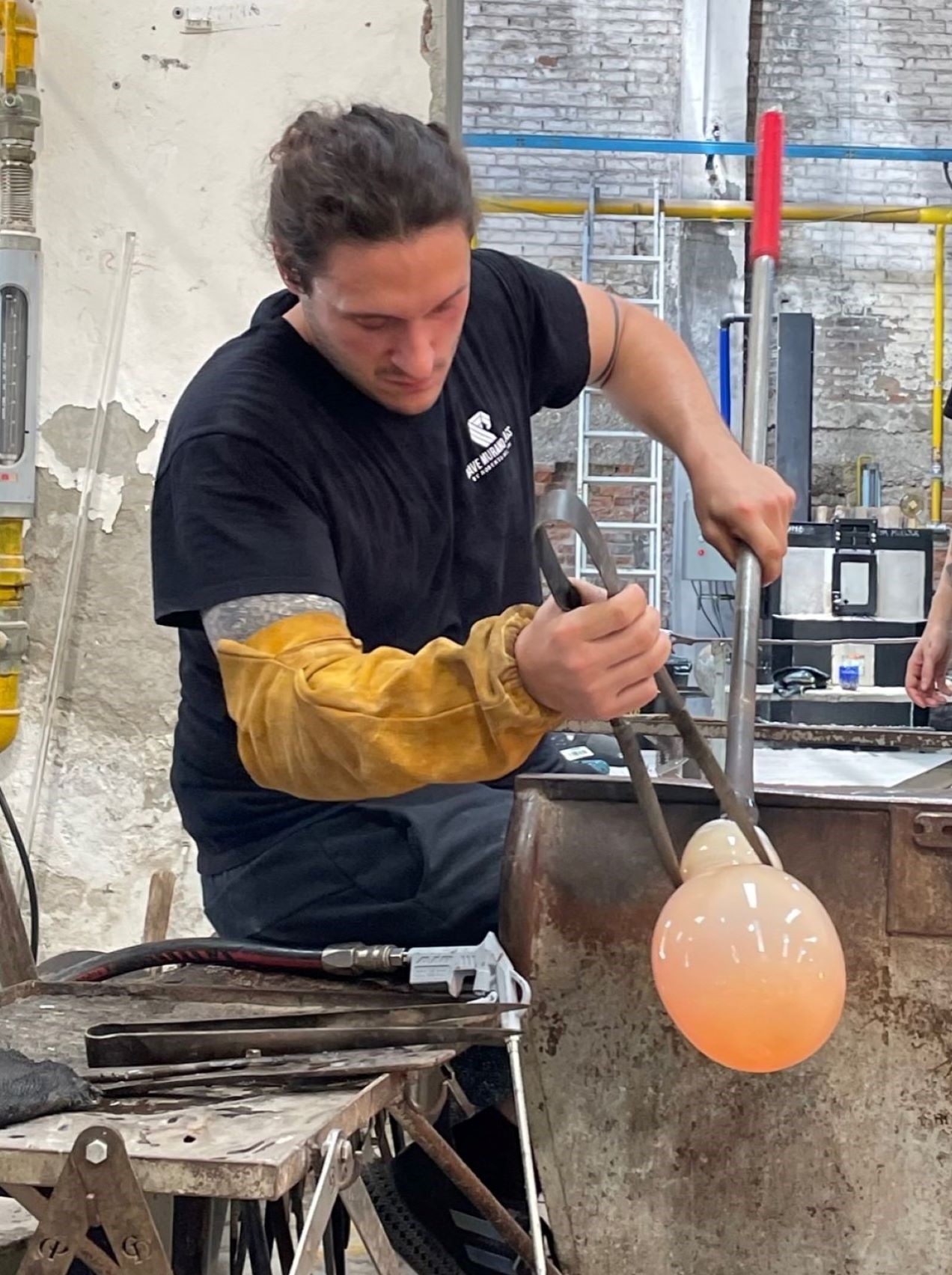
The originality of the sculptures of Lætitia Jacquetton thus lies in the juxtaposition between rocks, which she carefully selects, and blown glass. Thanks to the skills of the master glassmakers, the molten glass is set on the stones, taking on their form as it solidifies. “I work with rocks I search for in the mountains, one by one,” the designer explains. She personally chooses the stones that go into her works, listening to their energy. Her practice has been influenced by suiseki, the Japanese art of stone appreciation, seldom mentioned in Europe.
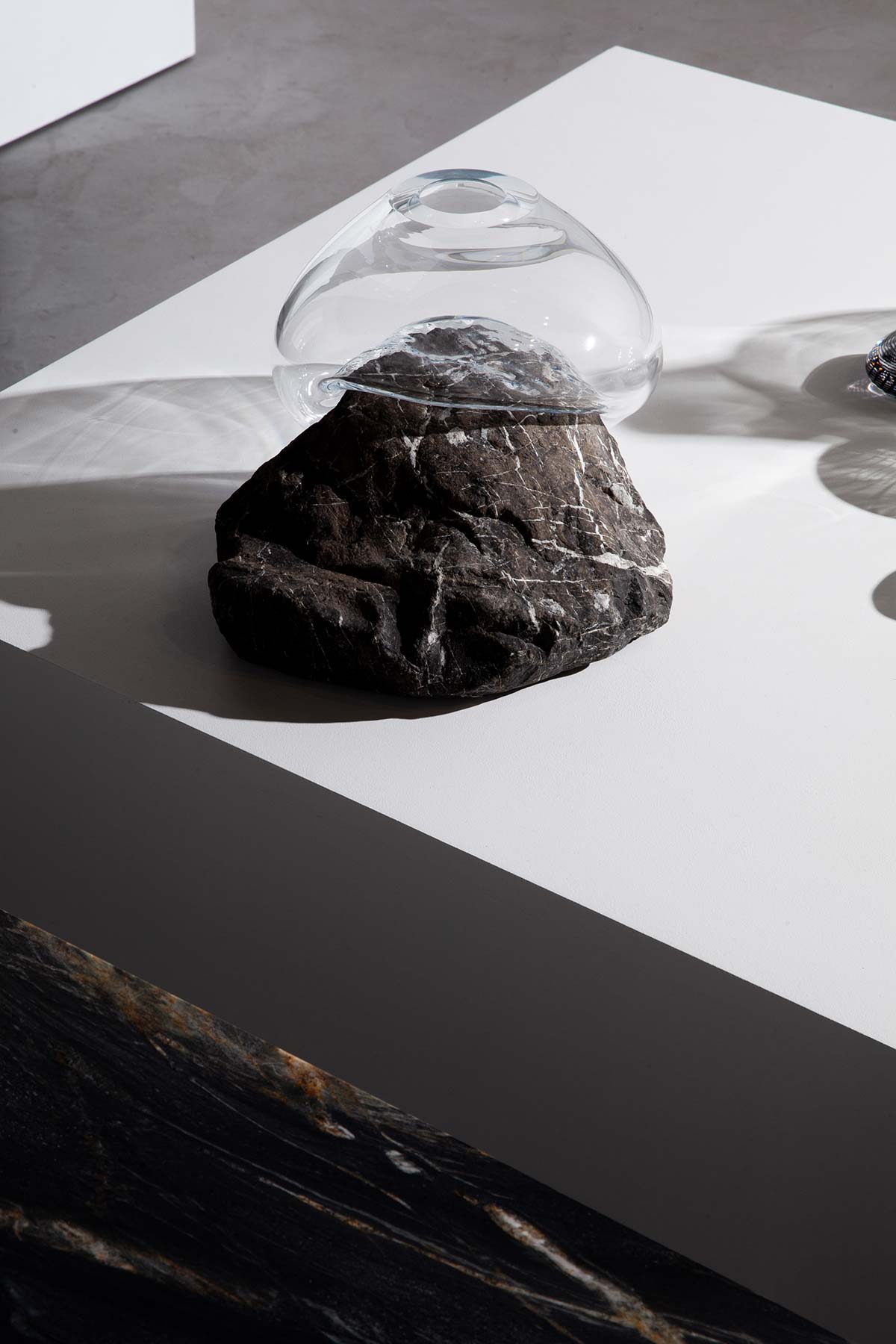
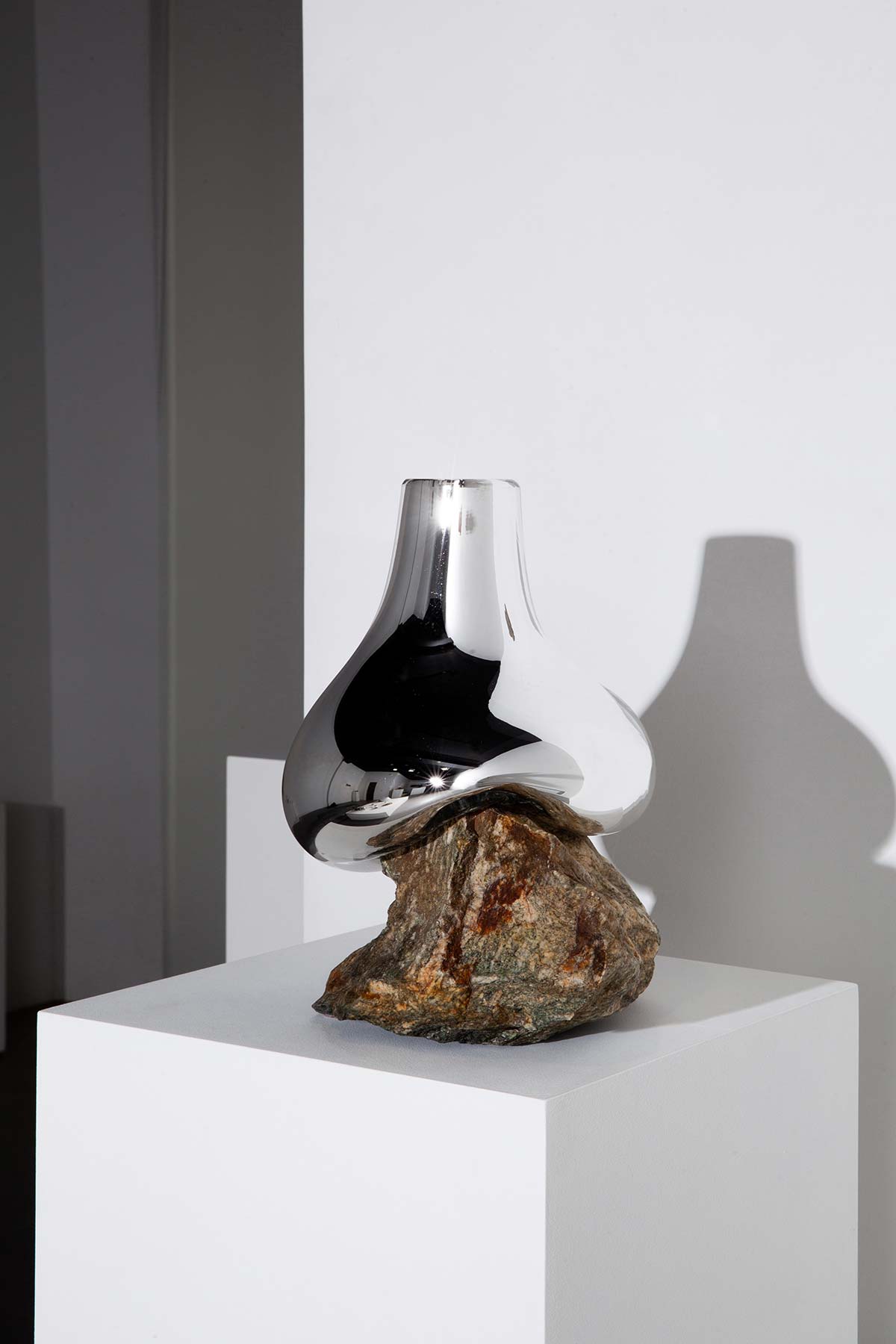
“I discovered that I have a way of looking at stones similar to the enthusiasts of suiseki,” she says. “When I see a stone I listen to its energy. An important part of this discipline lies precisely in listening to the energy stored inside the rock itself.” It is no coincidence that Japan has always been a key market for the works of Lætitia Jacquetton. In that area of the world she is known above all thanks to Lauren Manoogian, the friend and fashion designer who was the first to believe in her work, displaying some of her pieces in her New York showroom with a minimalist style. The Japanese clients who came into contact with her creations admired them very much.
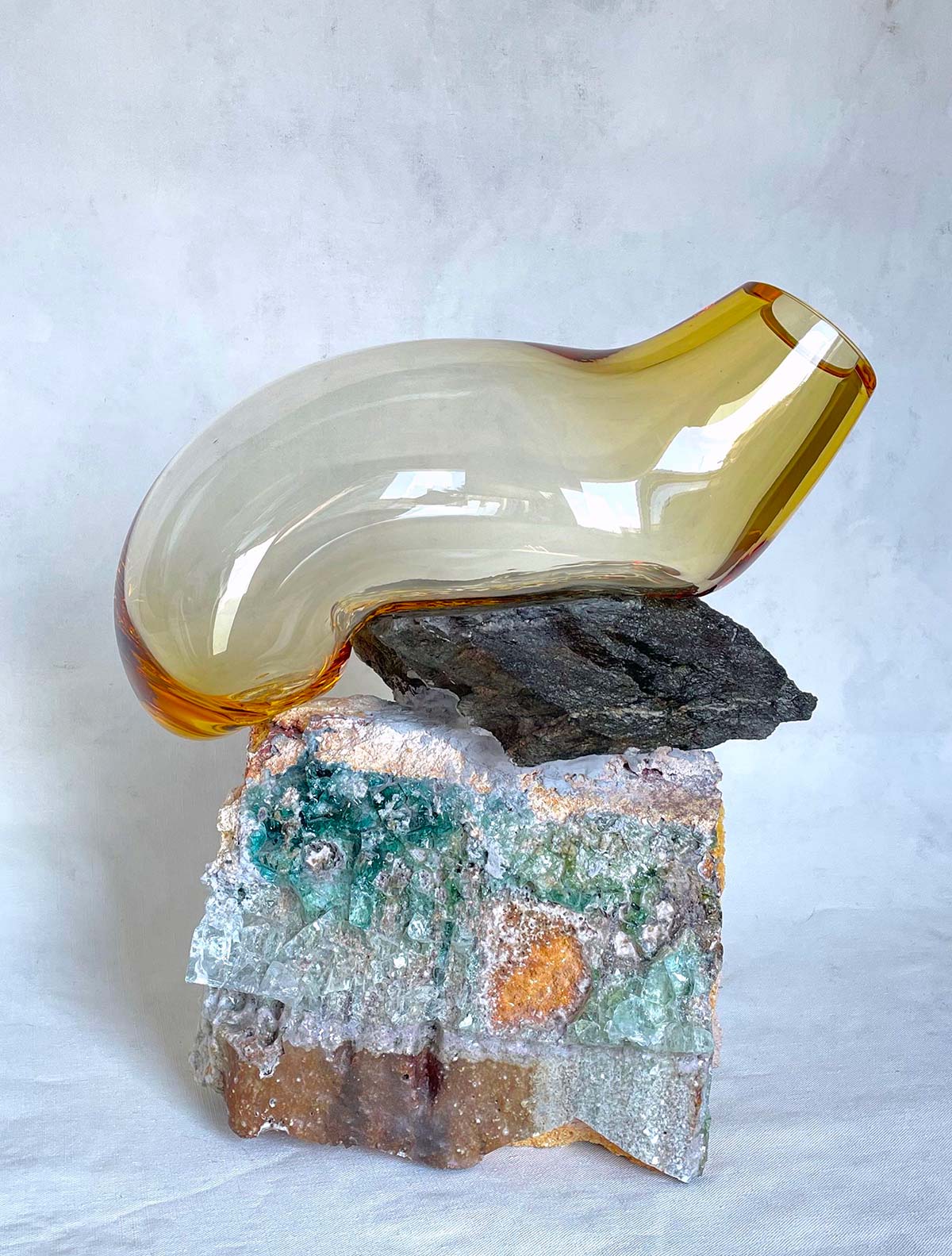

The theme of environmental impact of her work is an aspect with which the designer has always come to terms from up close. “I respect nature and stones,” she says. “I have often used stones I found in nature, in the Dolomites, for example, or in the south of France. I have always tried to avoid quarries, because they are often the cause of environmental disasters. Now that my production has increased, however, it seems more ethically to use the quarry’s leftover for my work, and I have found some suppliers who address environmental issues in a correct way.”
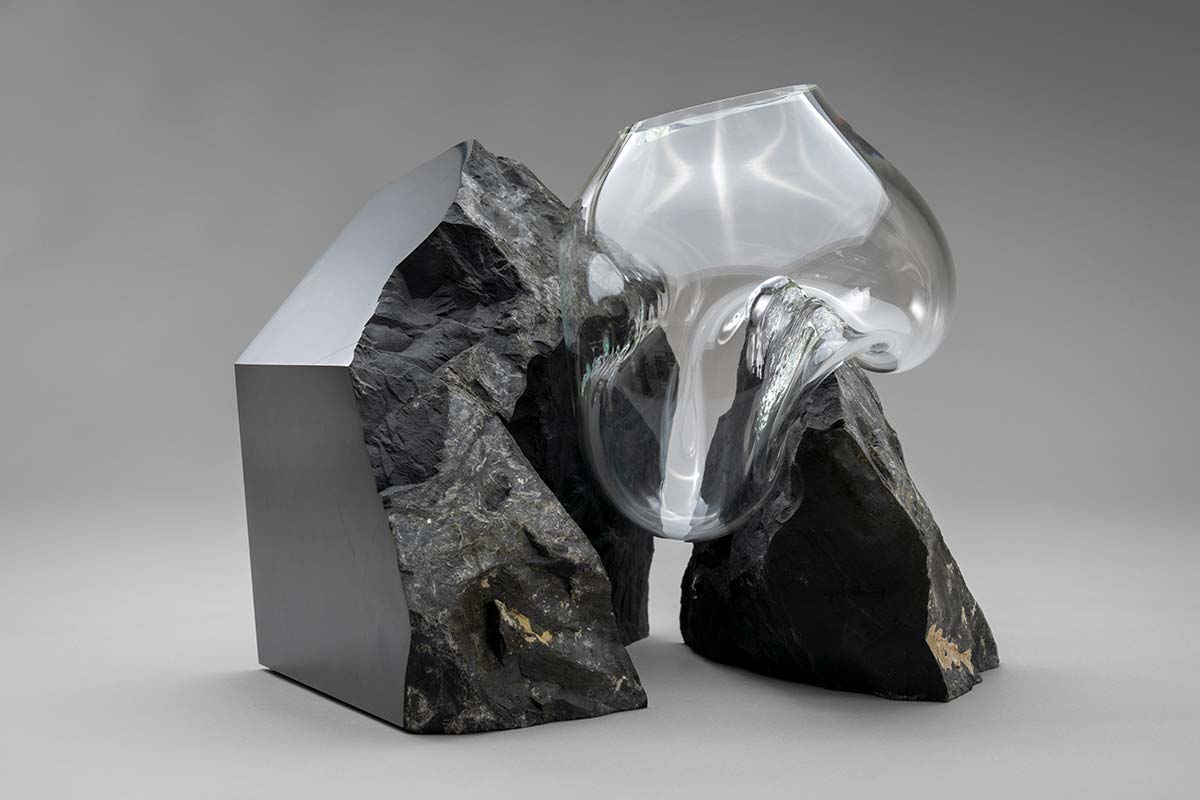
The last year has been an important one for Lætitia Jacquetton: after having shown work in September 2022 during Venice Glass Week, and then in the fall in Paris, first at Sinople Paris, her permanent gallery, and then during Paris Art Basel, with Private Choice Paris of Nadia Candet, in May she opened an exhibition at the gallery Casica in Tokyo – while in Japan she usually works with the gallery Escapers, with its focus on artistic crafts. Now she has just returned from a two-month residency in Karaka, near Auckland, New Zealand, invited by the gallery Fœnander. During this period of research in New Zealand, she created a body of 14 new works, produced in local glassworks, especially thanks to the collaboration with the artist Chauncey Flay. For the future, she looks forward to the exhibition for the September edition of Venice Glass Week, where this year she will present the project Anthropocene, which mixes natural stones and fired bricks with blown glass.
Photo © Charlotte Debauge, LFHQ Studios

